Residence United States Siblings Uma Dhanabalan | Nationality Indian American Role Scientist Citizenship United States Name Shiva Ayyadurai | |
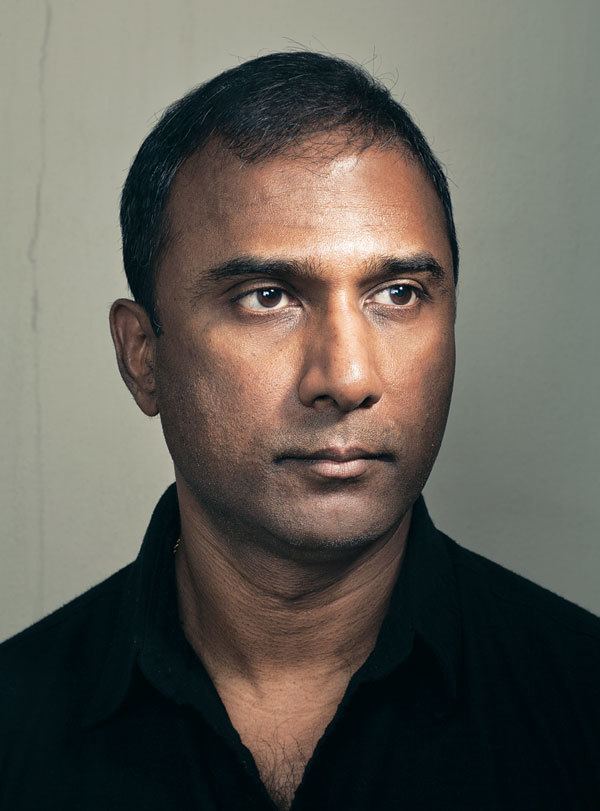 | ||
Parents Meenakshi Ayyadurai, Vellayappa Ayyadurai Similar People Fran Drescher, Peter Marc Jacobson, Charles Shaughnessy, Ray Tomlinson, Daniel Davis Profiles | ||
Doctoral advisor C. Forbes Dewey, Jr. | ||
E mail inventor shiva ayyadurai talks about advanced science behind tamil medicine
V. A. Shiva Ayyadurai is an Indian-born American scientist and entrepreneur. Ayyadurai is notable for his controversial claim to be the "inventor of email", based on the electronic mail software called "EMAIL" he wrote as a New Jersey high school student in the late 1970s. Initial reports that repeated Ayyadurai's assertion—from organizations such as The Washington Post and the Smithsonian Institution—were followed by public retractions. These corrections were triggered by objections from historians and ARPANET pioneers who pointed out that email was already actively used in the early 1970s.
Contents
- E mail inventor shiva ayyadurai talks about advanced science behind tamil medicine
- Va shiva ayyadurai sages and scientists 2013
- Early life and education
- CSIR India
- Millennium Cybernetics
- EMAIL invention controversy
- Genetically modified food
- Politics
- Personal life
- Books
- References

Ayyadurai also produced two controversial reports: the first questioning the working conditions of India's largest scientific agency; the second questioning the safety of genetically modified soybeans. Ayyadurai holds four degrees from MIT, including a Ph.D. in biological engineering, and is a Fulbright grant recipient. He is a Republican candidate in the 2018 United States Senate election in Massachusetts.
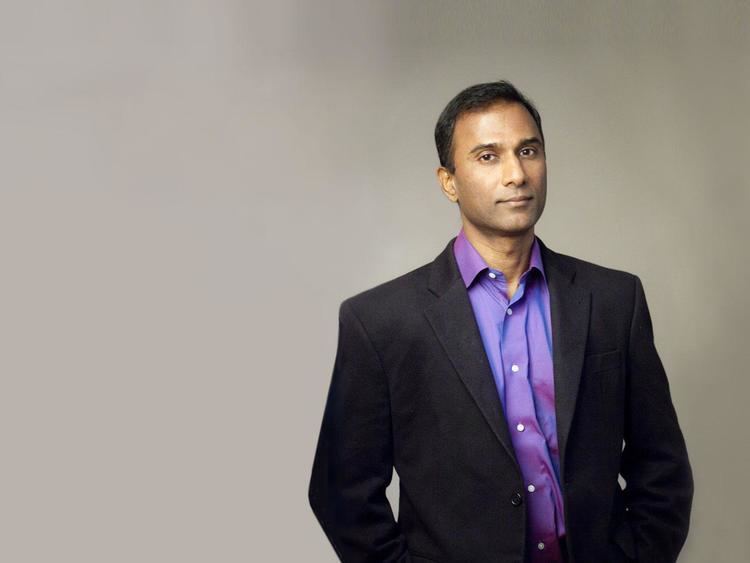
Va shiva ayyadurai sages and scientists 2013
Early life and education
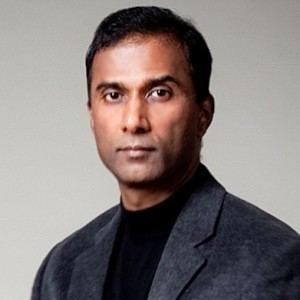
Ayyadurai was born in Bombay, Maharashtra, India. At the age of seven, he left with his family to live in the United States.
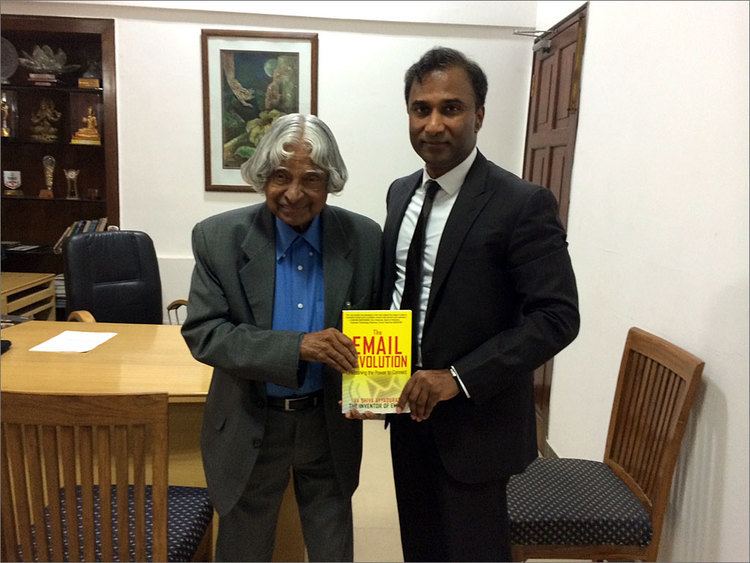
In 1978, as a 14-year-old high school student, he attended a summer program at the Courant Institute of Mathematical Sciences of New York University (NYU) to study computer programming; and then while a student at Livingston High School in New Jersey, Ayyadurai volunteered at the University of Medicine and Dentistry of New Jersey (UMDNJ) where his mother worked. There he created an email system to emulate the paper-based interoffice mail system then in use at the medical school. In 1982, he registered the copyright for his software, called "EMAIL", as well as for the program's user documentation.
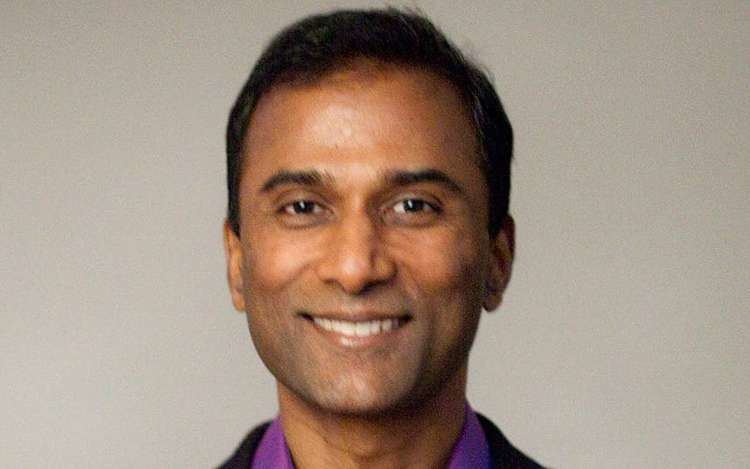
His undergraduate degree from MIT was in electrical engineering and computer science; he took a master's degree in visual studies from the MIT Media Laboratory on scientific visualization; concurrently, he completed another master's degree in mechanical engineering, also from MIT; and in 2007, he obtained a Ph.D. in biological engineering from MIT in systems biology, with his thesis focusing on modeling the whole cell by integrating molecular pathway models. In 2007, he was awarded a Fulbright U.S. Student Program grant to study the integration of Siddha, a system of traditional medicine developed in South India, with modern systems biology.
CSIR India
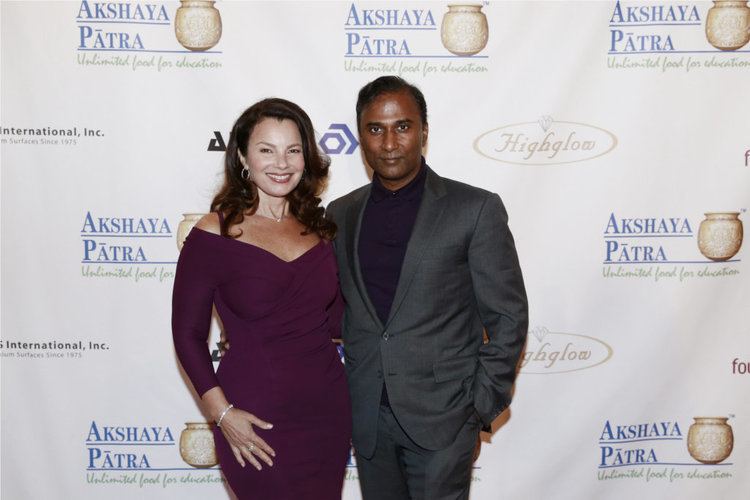
In 2009, Ayyadurai was hired by India's Council of Scientific and Industrial Research, India's largest science agency, by its director general, Samir K. Brahmachari. CSIR was mandated to create a new company, CSIR Tech, that would establish businesses using the research conducted by country's many publicly owned laboratories. Ayyadurai reported that he had spent months trying to create a business plan for CSIR Tech, but received no response from Brahmachari. Ayyadurai then distributed a draft plan, which was not authorized by CSIR, to the agency's scientists that requested feedback and criticized management. His job offer was subsequently withdrawn five months after the position was offered."

Brahmachari said that "the offer was withdrawn as [Ayyadurai] did not accept the terms and conditions and demanded unreasonable compensation." In its report, The New York Times said that "going public with such accusations is highly unusual. Mr. Ayyadurai circulated his paper not just to the agency's scientists but to journalists, and wrote about his situation to Prime Minister Manmohan Singh." In that letter, Ayyadurai said his report was intended to explore institutional barriers to CSIR's entrepreneurial mandate. He said that CSIR scientists reported that "they work in a medieval, feudal environment" that required a "major overhaul". The letter was co-authored by a colleague, Deepak Sardana. Pushpa Bhargava, founder director of the CSIR's Centre for Cellular and Molecular Biology in Hyderabad, endorsed the letter, calling the sacking the worst of many cases he had seen of "vindictiveness in the CSIR" and accused CSIR administration of being "impervious to healthy and fair criticism". The incident was seen as an example of the difficulty some Indian expatriate professionals may encounter returning home after growing accustomed to the more direct management style of the United States.
Millennium Cybernetics
In 1994 Ayyadurai founded a company called Millennium Cybernetics, which produces email management software originally called Xiva and now called EchoMail. The software analyzes incoming email message to organizations before either replying automatically or forwarding it to the most relevant department. By 2001, customers included Kmart, American Express, and Calvin Klein, as well as more than 30 U.S. senators to help handle constituent email. EchoMail competed with more established customer relationship management software that had an email component.
"EMAIL" invention controversy
Ayyadurai makes the controversial claim to be the "inventor of email". His claim is based on the software he wrote as a 14-year-old student at Livingston High School (New Jersey). In 1979—some sources say 1978—he wrote an implementation of an interoffice email system, which he called EMAIL.
A November 2011 Time Techland interview by Doug Aamoth entitled "The Man Who Invented Email" argued that the EMAIL program Ayyadurai had written as a 14-year old represented the birth of email "as we currently know it". In that interview, Ayyadurai recalled that Les Michelson, the former particle scientist at Brookhaven National Labs who assigned Ayyadurai the project, had the idea of creating an electronic mail system that uses the header conventions of a hardcopy memorandum. Ayyadurai recalled Michelson as saying: "Your job is to convert that into an electronic format. Nobody's done that before."
In February 2012, the Smithsonian National Museum of American History announced that Ayyadurai had donated "a trove of documents and code" related to EMAIL. The museum initially—inaccurately—cited the program as one of the first to include the now common "subject and body fields, inboxes, outboxes, cc, bcc, attachments, and others. He based these elements directly off of the interoffice mail memos the doctors had been using for years, in hopes of convincing people to actually use the newfangled technology." Ayyadurai's claims drew editorial clarifications and corrections, as well as criticism from industry observers. In a followup to its acquisition announcement, the Smithsonian stated that it was not claiming that Ayyadurai had invented email, but rather that the materials were historically notable for other reasons related to trends in computer education and the role of computers in medicine. The Smithsonian statement distinguished Ayyadurai's achievement by noting that historians in the field, "have largely focused on the use of large networked computers, especially those linked to the ARPANET in the early 1970s". The statement pointed out that Ayyadurai's approach instead "focused on communications between linked computer terminals in an ordinary office situation". The Washington Post also followed up with a correction of errors in its earlier report on the Smithsonian acquisition stating that: it incorrectly referred to Ayyadurai as the inventor of electronic messaging; the 'bcc', 'cc', 'to' and 'from' fields existed previously; Ayyadurai had not been honored as the "inventor of email".
Writing for Gizmodo, Sam Biddle argued that email was developed a decade before EMAIL, beginning with Ray Tomlinson's sending the first text letter between two ARPANET-connected computers in 1971. Biddle quoted Tomlinson: "[We] had most of the headers needed to deliver the message (to:, cc:, etc.) as well as identifying the sender (from:) and when the message was sent (date:) and what the message was about." Biddle allowed for the possibility that Ayyadurai may have coined the term "EMAIL" and used the header terms without being aware of earlier work, but maintained that the historical record isn't definitive on either point. Biddle wrote that "laying claim to the name of a product that's the generic term for a universal technology gives you acres of weasel room. But creating a type of airplane named AIRPLANE doesn't make you Wilbur Wright."
Thomas Haigh, a historian of information technology at the University of Wisconsin, wrote that "Ayyadurai is, to the best of my knowledge, the only person to have claimed for him or herself the title 'inventor of email'." Haigh argued that while EMAIL was impressive for a teenager's work, it contained no features that were not present on previous electronic mail systems and had no obvious influence on later systems. "The most striking thing about Ayyadurai's claim to have invented electronic mail is how late it comes. Somehow it took him thirty years to alert the world to [his] greatest achievement". Haigh wrote that by 1980, "electronic mail had been in use at MIT for 15 years, Xerox had built a modern, mouse-driven graphical email system for office communication, Compuserve was selling email access to the public, and email had for many years been the most popular application on what was soon to become the Internet."
David Crocker, a member of the ARPANET research community, writing in the Washington Post said "The reports incorrectly credited [EMAIL's] author, a 14-year old in the late 1970s, as the 'inventor' of email, long after it had become an established service on the ARPANET." Another computer historian, Marc Weber, a curator at the Computer History Museum, said that by 1978, "nearly all the features we're familiar with today had appeared on one system or another over the previous dozen years", including emoticons, mailing lists, flame wars, and spam.
After the controversy unfolded, MIT disassociated itself from Ayyadurai's EMAIL Lab and funding was dropped. MIT also revoked Ayyadurai's contract to lecture at the bioengineering department.
Ayyadurai characterized the earlier work of Tomlinson, Tom Van Vleck and others as text messaging, rather than an electronic version of an interoffice mail system. Responding to his critics on his personal website, Ayyadurai described his program EMAIL as "the first of its kind—a fully integrated, database-driven, electronic translation of the interoffice paper mail system derived from the ordinary office situation." Ayyadurai maintained that EMAIL was the first electronic mail system to integrate an easy-to-use user interface, a word processor, a relational database, and a modular inter-communications protocol "integrated together in one single and holistic platform to ensure high-reliability and user-friendliness network-wide."
Ayyadurai presented a press release on his webpage asserting that his undergraduate professor Noam Chomsky of MIT's Department of Linguistics and Philosophy also supported his claims.
In March 2016, Ayyadurai alleged that the overlooking of his achievements was a result of racism and a conspiracy between mainstream media and the military-industrial complex, particularly Raytheon where Tomlinson worked on ARPANET. After Tomlinson's death, Ayyadurai told The Hindu that he believed that news outlets retracted their stories about him because "Raytheon advertises in publications like the Huffington Post and CNN" and that if he were "a white guy and had a copyright for email, I would have my photo on every stamp in the world." The day after Tomlinson's death, Ayyadurai tweeted: "I'm the low-caste, dark-skinned, Indian, who DID invent #email. Not Raytheon, who profits for war & death.Their mascot Tomlinson dies a liar"
Lawsuits, legal actions
Gawker
In May 2016, Ayyadurai filed suit against Gawker Media for $35 million, alleging that Gawker published "false and defamatory statements", causing "substantial damage to Dr. Ayyadurai's personal and professional reputation and career." The filing also named writer Sam Biddle, executive editor John Cook, and Gawker founder/CEO Nick Denton. Gawker responded that: "These claims to have invented email have been repeatedly debunked by the Smithsonian Institute [sic], Gizmodo, the Washington Post and others."
In November 2016, the by-then-bankrupt Gawker Media settled the lawsuit with Ayyadurai for $750,000 as part of a broader settlement with wrestler Hulk Hogan and journalist Ashley Terrill, all of whom were represented by attorney Charles Harder. In a statement, Ayyadurai said that "history will reflect that this settlement is a victory for truth". Biddle denounced the settlement and said he fully stood by his reporting. Denton wrote that "we expected to prevail" in the Ayyadurai and Terrill lawsuits, "but all-out legal war with" billionaire Peter Thiel, who financially backed Harder, was untenable in terms of cost, time and human toll.
Katie Hafner, the author of several books on Internet history—including one on the development of ARPANET email—said, "This situation is both bizarre and appalling in that here we are simply trying to get the record straight, and [Ayyadurai has] managed to make money off claims that appear to be misleading."
Techdirt
In January 2017, Ayyadurai, again represented by Harder, filed a $15 million libel lawsuit on similar grounds against Techdirt founder Mike Masnick and two other parties for a series of articles published beginning in September 2014. In February, Masnick, represented by the firm Prince Lobel, filed two motions to dismiss. One motion argued that the articles were constitutionally protected opinion and written about a public figure without actual malice. The second motion asked for dismissal under California's anti-SLAPP law that compensates defendants for some legal expenses.
In September 2017, United States District Judge F. Dennis Saylor dismissed the defamation claims against Techdirt, but declined to strike the complaint under the anti-SLAPP law. In his ruling, Saylor wrote that definitions of "email" vary widely. Therefore, "whether plaintiff's claim to have invented e-mail is 'fake' depends upon the operative definition of 'e-mail.' Because the definition does not have a single, objectively correct answer, the claim is incapable of being proved true or false." Harder said they would appeal.
Other actions
In January 2017, Harder threatened the Diaspora Foundation with legal action unless it removed three posts by Roy Schestowitz that Harder alleged were "defamatory" towards Ayyadurai. (The Diaspora Foundation is part of the Free Software Support Network, which is in turn run by Eben Moglen and the Software Freedom Law Center.)
Genetically modified food
In 2015, Ayyadurai published a paper that applied systems biology, which uses mathematical modeling, to predict the chemical composition of genetically modified (GM) soybeans and whether or not they were substantially equivalent to unmodified soybeans. The paper claimed that GM soybeans have lower levels of the antioxidant glutathione and higher levels of cancer-causing formaldehyde, making the modified soybean substantially different, contrary to previous safety assessments. The publication led to sensational headlines from opponents of GM foods. Shortly after publication, he embarked on a speaking tour of the US. At the National Press Club, he said that genetic modification had "fundamentally modified the metabolic system of the soy" disrupting the "beautiful way of detoxifying [formaldehyde]" present in non-GM soy.
The European Food Safety Agency evaluated the paper and determined that "the author's conclusions are not supported" due to the lack of information on the input into the model, the fact that the model was not validated and because no measurements of soybeans were made to establish whether GM soy actually contained elevated levels of formaldehyde. Plant scientist Kevin Folta noted that there was "no evidence ever published ... that shows a difference in formaldehyde between GM and non-GM varieties". Ayyadurai later cited the study as evidence of a lack of safety standards for GM foods and bet Monsanto a $10m building if they could prove that they were safe. Monsanto did not take up the challenge but stated that GM food did indeed undergo safety assessments that "are more rigorous and thorough than assessments of any other food crop in history". In 2016, Ayyadurai promised to donate $10m to Hillary Clinton's presidential campaign if she could disprove his research.
Politics
On March 17, 2017, Ayyadurai, a Republican, filed as a candidate in the 2018 United States Senate election in Massachusetts, running against incumbent Elizabeth Warren. He received the endorsement of former Boston Red Sox pitcher Curt Schilling, who was himself considering entering the race.
Ayyadurai said that Warren was at the top of a U.S. "neo-caste system" composed of "academics, career politicians and lawyer/lobbyists", a "spineless clan" who never expect to be challenged. He said he would take a science and engineering perspective on problem solving, focusing on immigration, education and innovation. He called for secure borders and an end to sanctuary cities, support for more choices in public education, and for more scrutiny of "pay-to-play" science research.
In August 2017 he spoke at the Boston Free Speech rally, a gathering which drew large counter-protests and whose speakers included right-wing extremists. Ayyadurai later disputed how the event was characterized, tweeting that the "establishment" wanted to block attendance and media coverage, and sought a "Race War to divide us". In his remarks, he said that "all of us here, in many ways, are true patriots because, in spite of that noise out there, we're here to stand up for something very fundamental, which is called free speech."
Personal life
Beginning in 2014, Ayyadurai was romantically connected with the actress Fran Drescher. On September 7, 2014, Ayyadurai and Drescher participated in a ceremony at Drescher's beach house. Both tweeted that they had gotten married, and the event was widely reported as such. Ayyadurai later said it was not "a formal wedding or marriage", but a celebration of their "friendship in a spiritual ceremony with close friends and her family". The couple split up in September 2016.
